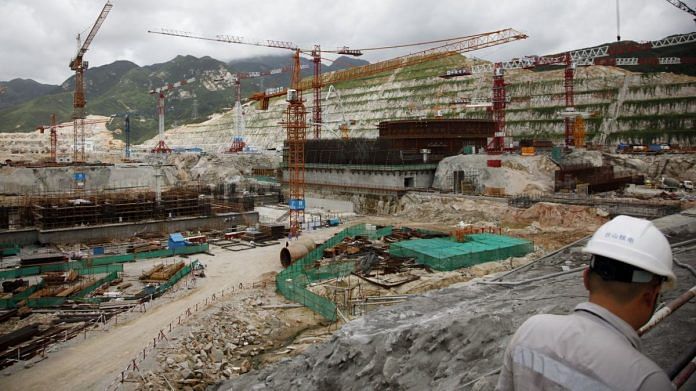
Thank you dear subscribers, we are overwhelmed with your response.
Your Turn is a unique section from ThePrint featuring points of view from its subscribers. If you are a subscriber, have a point of view, please send it to us. If not, do subscribe here: https://theprint.in/
If the COP-26 summit was any indication of the future for coal, one thing’s for sure – the world is not going to end its dependency on coal anytime soon. This is especially true for the developing nations like India and China, which depend on coal to fulfil the growing appetite for electricity for their burgeoning Industries. The question we then reckon; is how can we meet our insatiable demand for electricity and reduce our carbon emissions at the same time?
The problem with Renewables
Well, one might think that the answer to this conundrum is of course the renewable sources of electricity. But it’s more complicated than that. Recent studies have critically analysed the environmental impact of solar and wind energy. They revealed that thousands of birds and bats are killed by winds farms every year. Solar farms require clearing out vast expanses of land which destroys the habitat of animals like desert tortoises, coyotes, and rattlesnakes. The second big problem with renewable sources is that they are very inefficient. Solar and wind farms operate for 15-40% of the time depending upon the weather. They also convert energy from an inherently less dense source of energy and therefore produce less electricity per unit of area. It takes around 360 times more land area for a wind farm to produce the same amount of electricity as a nuclear facility!
Since renewables are an intrinsically weak source of energy, they need higher material throughput to produce the same amount of energy. According to a study by environmental progress, it would take 7 times more material to build a solar plant that produces commensurate levels of energy than a nuclear plant.
But what about the narrative around clean energy?
Accepted, renewables are one of the cleanest sources of energy generation. However, carbon emissions from them aren’t zero either. Take, for instance, solar panels, the most essential component of a solar power plant. These panels consist of heavy metals like lead, cadmium, and chromium. If they are not disposed-off correctly after their expected 15-20 years’ of life expires, they can pose a great threat to the very environment they are trying to save. An important point to note here is that no region other than the EU has a proper plan in place to dispose of/recycle them once their life expires.
Why Nuclear?
For starters, nuclear is a zero-emission clean energy source. It does not release any harmful emissions into the environment. The radioactive waste is safely contained without it being disposed of in the environment. In fact, if we take into consideration the material throughput required to produce a unit of energy, nuclear energy is much cleaner than renewables.
It is also a much more reliable source of energy than renewables. It is the only clean source of energy that can offer a 24*7 steady and uninterrupted power supply to the masses. This makes nuclear ideal for both industrial and commercial use.
Even though nuclear has the potential to revolutionize global energy production, it’s scarcely used and even banned in some countries. So, what gives?
It turns out that nuclear energy has unfortunately been the victim of bad publicity and negative political campaigns. Avoidable disasters such as Chernobyl, and the Three-mile island instigated a sense of paranoia and fear among general the public which precipitated political and environmental campaigns against nuclear energy. Most recently, after the Fukushima nuclear incident, Germany decided to decommission most of its nuclear plants and decided to replace them with renewables. This has come at a massive cost, not only the electricity bills are rising but it has also made it more reliant on the Natural Gas supply from Russia.
Safety is a genuine concern for nuclear proliferation across countries and continents. However, data shows that we can only attribute 0.07 deaths to nuclear accidents per terawatt-hour. On the other hand, according to WHO, 4.2 million people die as a result of exposure to ambient air pollution every year.
The point I am trying to make through this article is plain and simple – Nuclear is the best alternative to smoke-belching coal power plants. It’s by far our best hope to meet sustainability targets and fulfil the growing electricity demand simultaneously. Nuclear is more reliable, scalable, and clean when compared to other alternatives. Moreover, contrary to popular belief, it’s pretty safe too. Renewables can play the role of a supporting character but the centre stage has to be taken by the nuclear. Governments should re-evaluate their stance on nuclear energy and outline concrete schemes to proliferate nuclear power before it’s too late.
Also read: Nuclear power’s big problem isn’t what you think
These pieces are being published as they have been received – they have not been edited/fact-checked by ThePrint.

COMMENTS